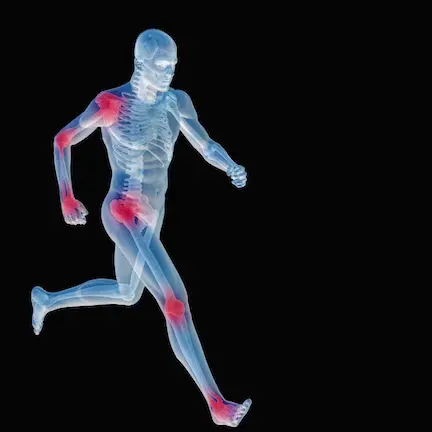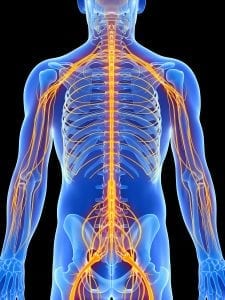Rating Musculoskeletal System Conditions for Military Disability
- Published:
- Last Updated: October 4, 2022

The Musculoskeletal System is vast and complex. It is made up of every bone, joint, muscle, tendon, ligament, and soft tissue in the body. Because of this, a lot of things can go wrong.
Assigning Military Disability Ratings to conditions of the musculoskeletal system for Military Disability, however, is pretty simple as long as you understand the rules of the VASRD, the law that determines how conditions are rated for DoD Disability and VA Disability.
We cover everything on our site, but to make it a bit easier, here is a quick breakdown:
Limited motion of a joint is the most common musculoskeletal rating BY FAR. If any condition, no matter what it is, causes a joint to have less motion than normal, that condition will be rated on limited motion most of the time. There are a few exceptions that are clearly noted on our site, but just always think limited motion first, and you’ll be right the majority of the time.
All the information on rating amputations can be found on our Amputations page.
All the information on rating cancer and tumors can be found on our Cancer and Tumors of the Musculoskeletal System page.
Diseases: Each disease is rated a bit differently, but all can be found on our Diseases of the Musculoskeletal System page. Do note that many of these diseases, especially Degenerative Arthritis, are always rated on limited motion of the joint that is affected unless there is no limited motion.
We’ve divided the ratings for the bones, joints, and tendons into pages for each body part:
Each joint can be rated separately unless specifically noted. This means that if you have a knee condition that later causes you to also have an ankle condition, both the ankle and the knee can be rated separately.
Surgeries: Joint replacements have their own ratings on the various body part pages. Surgeries for tendons or ligaments, however, do not have their own ratings. They are rated on limited motion of the affected joint. For example, the VASRD does not have a code for an ACL tear. The ACL is a ligament in the knee, and an ACL tear is most commonly treated by surgery. This condition is rated on the motion that remains in the knee after the surgery. Is there too much motion? Limited motion? All ligament or tendon conditions are rated on the main joint that they affect.
The muscles are all divided into different groups that control the various parts of the body:
All muscle conditions are either rated on the limited motion of the affected body part or on the Slight to Severe scale, whichever gives the higher rating. So if you have a muscle condition in your thigh that limits the motion of your knee, then check both the muscle rating under the Slight to Severe scale and limited motion of the knee to find which gives you a higher rating.
It is very rare to get a rating for the muscles and a rating for the related joint, but it is possible in more extreme or special cases. It is all up to the Rating Authorities, however, so it’s impossible for me to say definitively one way or the other. Normally just one rating under either limited motion of the joint or the Slight to Severe scale, not both.
All the information on rating muscle hernias can be found on our Muscle Hernias page.
That’s it. If you are unable to find your musculoskeletal condition, it will be rated analogously under the condition that is closest to it, but it’s never a bad idea to think limited motion first.
Recent Posts
TDRL vs. PDRL—Which is better for disability benefits?
February 13, 2025
Leukemias and Multiple Myelomas NOW on the Presumptive List
January 9, 2025
Two MORE Conditions added to the Burn Pit Presumptive List
January 3, 2025
The 2025 VA Disability Rates are here!
December 2, 2024
About Us










4 Comments
In my exam they have all of the positions due to pain, ie flexion, extension, abduction, adduction, external rotation, and internal rotation. Will they rate each one for pain? Because they can rate them all? Can they give me a 0%? My numbers for ROM wouldn't receive one of the ratings. I have :
Flexion 0 to 90
Extension 0 to 25
Abduction 0 to 30
Adduction 0 to 25
External Rotation 0 to 30
Internal Rotation 0 to 25.
Muscle strength was 3/5, with reduction in muscle strength.
Please give me your opinion of my numbers. I also have Imaging studies have found degenerative arthritis.
Hi Erica –
You can only get one rating per joint, so while you can get a rating for a hip and another for a knee, you cannot get more than one rating for each joint. If you had limited motion in more than one direction, they'd choose the code that gave you the highest rating, but you'd still only get one rating.
Since you have a full range of motion, you cannot get a rating for limited motion. Instead you will get ONE 10% rating for painful motion in this joint and that's all.
When rating joints for the spine would each vertebrae in the thoracolumbar be considered a joint or would the spine be rated as a whole?
i.e.
L4-5 fusion with stenosis and L2-3and L3-4 intervertebral disc syndrome.
Would they be rated as one diagnostic code or as 3?
Also,
When measuring ROM for thoracolumbar spine segment it notes that flexion should be measured without including hip flexion. Is there a formal way of measuring it so as to isolate and get only the thoracolumbar?
Hi James –
You would receive one total rating for your entire back condition, not three separate ratings. Since you have a fusion, the code would most likely be 5241, and they'd rate it on limited motion. When measuring limited motion, the physician doing the measurements will help you stabilize the hips so that the motion comes primarily from the spine. It's really not that important to separate the two: they'll just measure how far forward you can bend and call it good.